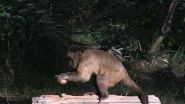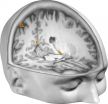California's 4.8 million low-wage workers now earn less than in 1979
New analysis shows that about one-third of the state's workforce earned less in inflated-adjusted dollars in 2014 than they did three decades earlier
2015-04-30
(Press-News.org) Over the past 35 years, California's high-wage workers have seen steady increases in their paychecks. But low-wage workers, 4.8 million strong and about one-third of the state's workforce, earned less in inflation-adjusted dollars in 2014 than they did in 1979, according to an analysis from the University of California, Berkeley.
UC Berkeley researchers analyzing U.S. Census Bureau data at the campus's Center for Labor Research and Education found that low-wage workers, defined as those earning hourly wages of $13.63 or less, have seen steady declines in their inflation-adjusted buying power. This low-wage workforce, nearly three-quarters nonwhite and concentrated in two industries -- retail trade, and restaurants and other food services -- has also become older and more highly educated.
Teens made up 5 percent of low-wage workers in 2014, down from 16 percent in 1979, and 48 percent of low-wage earners in 2014 had attended some college, compared to 39 percent in 1979. The analysis also showed that 40 percent of the state's low-wage workers in 2014 were foreign-born.
"We found that low-wage workers in California are older and more educated than they were 30 years ago, and yet they've seen stagnant and even declining wages," said Annette Bernhardt, a visiting UC Berkeley professor of sociology and a senior researcher at the center. "The story of growing inequality is not just about the top 1 percent, it is also about the millions of low-wage workers and their families who struggle with economic insecurity every day."
Bernhardt and the study's other authors, Ian Perry and Lindsay Cattell, found that the top occupations of California's low-wage workers are retail sales workers; cooks and food preparation workers; material-moving workers; and personal care and childcare workers. About half are in Southern California.
In 2013, the median income of low-wage workers' families was $29,100, compared to $63,000 for all California families, a gap that has widened since 2000. From 2007 to 2011, families of low-wage workers received $14.3 billion in annual support from public-assistance programs such as the Earned Income Tax Credit, Medicaid and food stamps.
The researchers published their analysis in chart form in Low-Wage Work in California: 2014 Chartbook, the first edition of an ongoing resource with a wide range of information about low-wage workers, their families and their jobs. The chartbook will be updated annually as new census data becomes available.
INFORMATION:
ELSE PRESS RELEASES FROM THIS DATE:
2015-04-30
As the number of bills passed by Congress declines, fewer and fewer Congressional representatives are voting across party lines, leaving only a few key representatives as collaborative voters, according to researchers.
"We can't say for sure that the decline in cooperation is the sole reason that there are fewer bills being introduced or passed by Congress, but we do know the two are statistically correlated, and both have been dropping steadily over the past 60 years," said Clio Andris, lead author and assistant professor of geography at Penn State.
The researchers ...
2015-04-30
China's government and other sources say that the country's carbon-dioxide emissions flattened out between 2013 and 2014. The leveling-off was a remarkable feat that could set the country on a course to beating its own goals for lowering emissions. But this optimistic outcome hinges on China overcoming some serious energy challenges, according to an article in Chemical & Engineering News (C&EN), the weekly newsmagazine of the American Chemical Society.
Steven Gibb, a senior editor at C&EN, reports that a number of factors could help explain the emissions plateau. China ...
2015-04-30
How and when does mom feed her embryo? We humans, like most mammals, experience pregnancy where a mother supplies nutrition directly to the embryo as it develops. But we're in the minority.
Most members of the animal kingdom supply eggs with nutritious yolk before they are fertilized. With this yolk supply, fertilized eggs develop as embryos in the environment outside the mother's body. For over a century, the scientific understanding of matrotrophy ("mother-feeding") of an embryo developing inside a mom's body has come from vertebrate animals, especially mammals like ...
2015-04-30
The latest Special Issue from ecancermedicalscience is dedicated to the memory of our late friend, Dr Mario Sideri.
The Special Issue, "Prevention of gynaecological cancers: in memory of Mario Sideri," consists of nine articles centred around Dr Sideri's favoured research topic.
Dr Sideri was one of the first doctors in the world to identify the connection between the human papillomavirus (HPV) and cervical cancer.
He served as the Director of the Preventive Gynecology Unit at the European Institute of Oncology (IEO) in Milan from 1994 until his tragic death in June ...
2015-04-30
When it comes to cracking nuts, wild bearded capuchin monkeys are more skilled than anyone had given them credit for, according to researchers who report new findings in the Cell Press journal Current Biology on April 30.
The monkeys are known to use stone "hammers" to crack nuts. The new study shows that the monkeys are quite careful about the amount of force delivered to those nuts. They adjust the force applied with each strike based on the condition of the nutshell, making it less likely that they'll end up smashing the tasty kernel inside.
"Wild bearded capuchin ...
2015-04-30
Bats are masters of flight in the night sky, capable of steep nosedives and sharp turns that put our best aircraft to shame. Although the role of echolocation in bats' impressive midair maneuvering has been extensively studied, the contribution of touch has been largely overlooked. A study published April 30 in Cell Reports shows, for the first time, that a unique array of sensory receptors in the wing provides feedback to a bat during flight. The findings also suggest that neurons in the bat brain respond to incoming airflow and touch signals, triggering rapid adjustments ...
2015-04-30
Neuroscientists have perfected a chemical-genetic remote control for brain circuitry and behavior. This evolving technology can now sequentially switch the same neurons - and the behaviors they mediate - on-and-off in mice, say researchers funded by the National Institutes of Health. Such bidirectional control is pivotal for decoding the brain workings of complex behaviors. The findings are the first to be published from the first wave of NIH grants awarded last fall under the BRAIN Initiative.
"With its new push-pull control, this tool sharpens the cutting edge of ...
2015-04-30
The feeling of being inside one's own body is not as self-evident as one might think. In a new study from Sweden's Karolinska Institutet, neuroscientists created an out-of-body illusion in participants placed inside a brain scanner. They then used the illusion to perceptually 'teleport' the participants to different locations in a room and show that the perceived location of the bodily self can be decoded from activity patterns in specific brain regions.
The sense of owning one's body and being located somewhere in space is so fundamental that we usually take it for granted. ...
2015-04-30
First study to show pattern of telomere changes at multiple time points as cancer develops
Telomeres can look 15 years older in people developing cancer
Pattern suggests when cancer hijacks the cell's aging process
CHICAGO -- A distinct pattern in the changing length of blood telomeres, the protective end caps on our DNA strands, can predict cancer many years before actual diagnosis, according to a new study from Northwestern Medicine in collaboration with Harvard University.
The pattern -- a rapid shortening followed by a stabilization three or four years before ...
2015-04-30
Rochester, Minn. -- Over the last decade, numerous studies have shown that many Americans have low vitamin D levels and as a result, vitamin D supplement use has climbed in recent years. Vitamin D has been shown to boost bone health and it may play a role in preventing diabetes, cancer, cardiovascular disease and other illnesses. In light of the increased use of vitamin D supplements, Mayo Clinic researchers set out to learn more about the health of those with high vitamin D levels. They found that toxic levels are actually rare.
Their study appears in the May issue of ...
LAST 30 PRESS RELEASES:
[Press-News.org] California's 4.8 million low-wage workers now earn less than in 1979
New analysis shows that about one-third of the state's workforce earned less in inflated-adjusted dollars in 2014 than they did three decades earlier


